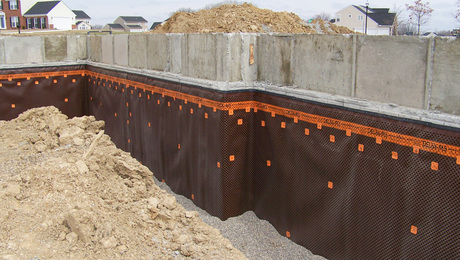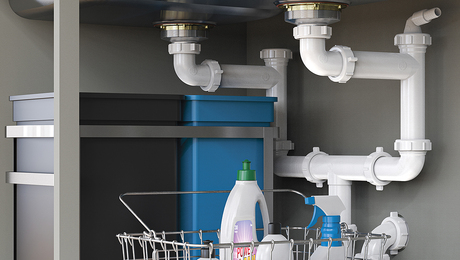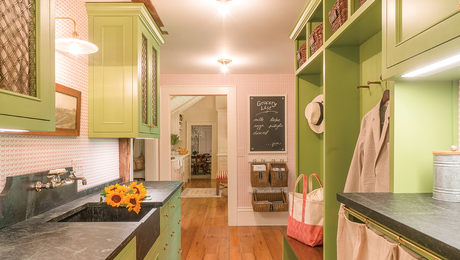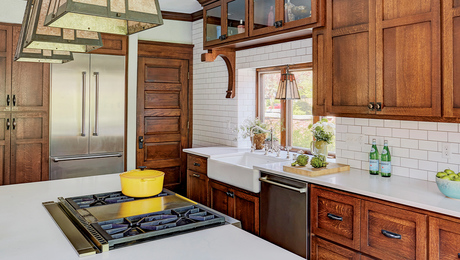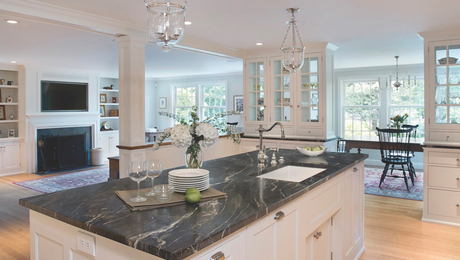Kitchen Sinks That Shine
With so many shapes, sizes, colors, and materials, one may not be enough.

Synopsis: This article presents the pros and cons of over half a dozen sink choices, with information on materials, sizes, shapes, and cost. If you’re shopping for a sink, this is the right place to start.
In its most basic form, the kitchen sink is still what it always has been: a watertight basin where dishware, food, and even small children are washed. Manufacturers, however, are turning this mundane kitchen fixture into something that’s both more stylish and more functional. By experimenting with new shapes, materials, and features, designers are elevating the sink’s status from overlooked to center stage.
Consumers are increasingly encouraged to see their kitchen sinks as workstations, not just as places to scrub pots and pans. Accessories such as cutting boards, colanders, and knife racks are helping to make sinks more useful even as a broader palette of materials is jazzing them up.
Stainless steel is still the choice of as many as 75% of all buyers. Yet offerings go far beyond traditional one- or two-bowl sinks to encompass large workstations that resemble cleaning and food-prep areas found in commercial kitchens. As sinks keep pace with the commercial-style appliances that many homeowners are installing, prices have risen accordingly.
The rest of the market offers an expanding array of choices, including enamel, solid surface, fire clay, soapstone, copper, bronze, stone composites, and concrete.
Stainless steel: myriad shapes, sizes, and costs
It’s easy to understand why professional cooks favor sinks made of stainless steel: It neither absorbs food and bacteria nor rusts, and it is extremely durable, impervious to heat, and relatively easy to clean. Available in both polished and brushed finishes (polished versions are more difficult to maintain), stainless-steel sinks come in a variety of shapes and sizes with as many as three separate bowls.
A two-bowl stainless sink is one of the least-expensive options on the market, starting at about $30. This economy model is made from thin steel — typically 20 to 22 gauge (ga.) — that is more likely to flex under pressure or dent when something heavy is dropped in the sink. When looking at steel thickness, remember: the higher the gauge, the thinner the steel. In less-expensive sinks, the bowls can be as shallow as 6 in., and deeply rounded inside corners can reduce the amount of usable room in the bottom of the bowl for washing.
Moderately priced stainless sinks are made from thicker-gauge steel — up to 18 ga. — and have deeper bowls with more tightly radiused corners. Bowl depths of 10 in. are common, and because the steel is thicker, it is less susceptible to denting and is quieter when a waste disposer is added. A two-bowl model costs between $400 and $700, but the price can reach $1,000 or more for a 45-in.-wide three-bowl model.
At the very top of the heap are commercial-style sinks made from even heavier 16-ga. steel. These sinks are very stiff and dent-resistant, and extra attention to sound-deadening material on the bottom makes them quieter and better insulated than low-end models.
A trend toward commercial-style appliances is pushing manufacturers to offer stainless-steel workstations that include sinks, cutting boards, integral drain boards, and the like. You’ll pay for what you’re getting, though. Costs for these high-end sinks can get up to $5,000 to $8,000.
For more photos, illustrations, and details, click the View PDF button below:
Fine Homebuilding Recommended Products
Fine Homebuilding receives a commission for items purchased through links on this site, including Amazon Associates and other affiliate advertising programs.

All New Kitchen Ideas that Work

Pretty Good House

A Field Guide to American Houses









